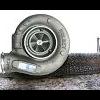Removing Vct Solenoid And What The Result Will Be?
Announcements
-
Similar Content
-
Latest Posts
-
Meh, At 60 years old, I have been doing dumb stuff for much longer than you mate, I am the true King And unfortunately I cannot be a maroon, as I am not brownish red As for not getting ITB's, the plenum intake will apparently show typical gains across the board and increase induction noise a bit, but, have all over less dort than ITB's Cost difference for the extra ITB dorts was significant though, the total parts for the plenum set up is "around" $2kAUD plus shipping, the ITB's were $4kAUD plus shipping, I was contemplating really hard about paying the extra $2k for all of the dorts, but weirdly, some form of common sense, from listening to the platform experts prevailed As for the NA mod hate by some, I've had a few boosted cars, with all their inherent issues, I'm now looking at simplicity and legalities for a street car, maybe I'm just getting old, and I'm quite happy to spend some of the kids inheritance, 5kw at a time 🤣 And think of all the money I'll be saving on consumables that something with boost needs, like engines, gearboxes, diffs, clutches, tilt trays... etc. etc. etc. 🤪
-
Haha. I wouldn't say I am either but I've definitely been around it plenty. I'm guessing you know the dial in is basically to make a handicap to level the playing field between racers. The car with the slower dial in goes first and in theory if they run their dial in time and the faster car also does then they cross the finish time if they also have exactly the same reaction time - if you go faster than the dial in them you lose, but if you are too slow there's a good chance the other person will get to the finish line first. I'm normally supporting other cars but they were all pretty dialled and were egging me on to race as well, here's one of the cars I tune (Starlet) which ran within like 1 hundredth of its dial in through the competition: https://www.youtube.com/watch?v=inEBu-d9Gn4&t=69s
-
By robbo_rb180 · Posted
Where ever the fuel reg gets it reference is what I use to T into for map reference been a very long time so where it goes to plenum/runners I have no idea but never had issues. -
By robbo_rb180 · Posted
What ecu? Same shop every time? Same ambient temperature? If timing is correct then pull plugs and see if lean or rich. Dyno can also read different if they have changed ramp rate or not set tacho/speed properly -
I've never done dial in's just straight up, whatever that's called. I'm far from a drag (racing ) expert.
-








Recommended Posts
Create an account or sign in to comment
You need to be a member in order to leave a comment
Create an account
Sign up for a new account in our community. It's easy!
Register a new accountSign in
Already have an account? Sign in here.
Sign In Now